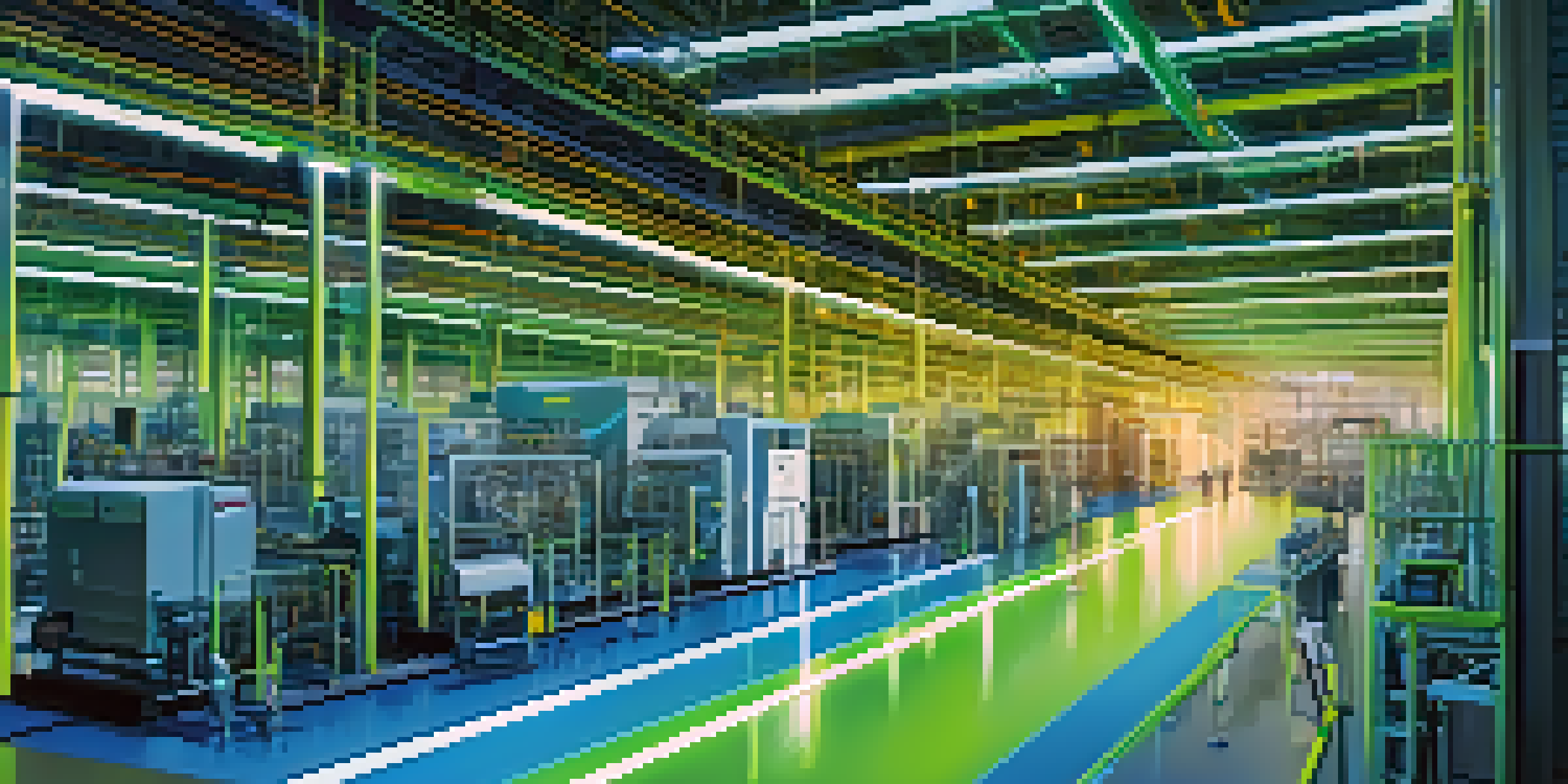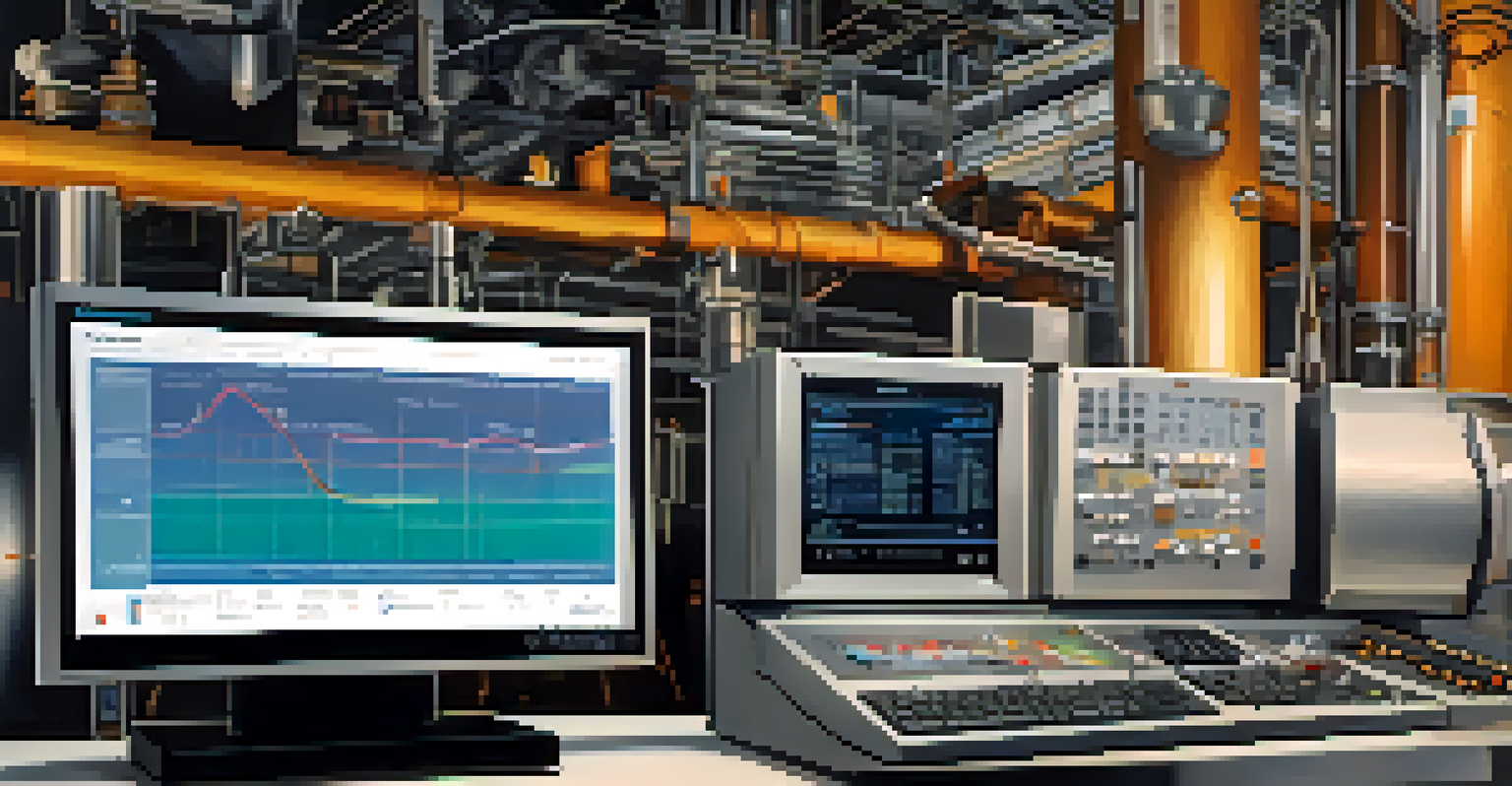Understanding Digital Twins in Manufacturing: A Comprehensive Guide

What Are Digital Twins and Why Do They Matter?
Digital twins are virtual replicas of physical assets, systems, or processes. They serve as a bridge between the physical and digital worlds, allowing manufacturers to monitor performance, predict issues, and optimize operations. Imagine having a real-time digital version of your car that alerts you to potential engine problems before they occur—that’s the power of a digital twin.
The digital twin is a virtual representation of a physical object or system, which allows for analysis and simulation of performance in real-time.
In manufacturing, digital twins provide a detailed view of production processes, enabling companies to simulate different scenarios and outcomes. This can lead to improved efficiency, reduced downtime, and significant cost savings. Think of it as having a detailed map that not only shows you where you are, but also helps you plan the best route to your destination.
As industries increasingly embrace automation and data analytics, understanding digital twins becomes crucial. They enable businesses to harness data from sensors and IoT devices, leading to smarter decision-making and enhanced overall performance. In a sense, digital twins are becoming the backbone of modern manufacturing.
The Core Components of Digital Twins in Manufacturing
Digital twins consist of three main components: physical assets, digital models, and data. Physical assets are the actual machines or products in a manufacturing environment, while digital models represent these assets in a virtual space. Data, often gathered from sensors, feeds into the digital model, ensuring it accurately reflects the physical twin's performance.

For instance, consider a manufacturing plant that produces automotive parts. The physical machines on the floor are the assets, while the digital models could simulate their operations. Data gathered from these machines—like temperature, speed, and maintenance needs—helps maintain the digital model's accuracy, allowing for real-time analysis.
Digital Twins Transform Manufacturing
Digital twins serve as virtual replicas of physical assets, enabling manufacturers to optimize operations and enhance performance.
These core components work together to provide insights that drive operational improvements. By analyzing data from the digital twin, manufacturers can identify inefficiencies, predict maintenance needs, and even enhance product design. This holistic approach transforms how companies operate and compete in the market.
How Digital Twins Enhance Operational Efficiency
One of the most significant benefits of digital twins is their ability to enhance operational efficiency. By simulating processes, manufacturers can test different strategies without disrupting actual production. This means they can identify bottlenecks or inefficiencies and address them proactively, leading to smoother operations.
Predictive maintenance is the key to unlocking the full potential of digital twins, ensuring that equipment runs smoothly and efficiently.
For example, a factory might use a digital twin to analyze its assembly line. By running simulations, they could discover that rearranging certain stations could reduce the time needed for assembly. This insight allows them to make data-driven decisions that enhance workflow and productivity.
As a result, companies not only save time but also reduce costs. The ability to test changes in a virtual environment means less wasted resources and a more agile response to market demands. In today's competitive landscape, this agility can be a game-changer for manufacturers.
Predictive Maintenance: A Game Changer with Digital Twins
Predictive maintenance is revolutionizing how manufacturers approach equipment upkeep. By utilizing digital twins, companies can predict when a machine is likely to fail, allowing them to perform maintenance before problems arise. This proactive approach minimizes unexpected downtime and extends the lifespan of equipment.
Imagine a manufacturing facility where a digital twin monitors a machine's performance in real-time, analyzing data like vibration and temperature. If the digital model detects anomalies that suggest a potential failure, maintenance can be scheduled before the machine breaks down. This prevents costly production halts and keeps the workflow uninterrupted.
Predictive Maintenance Saves Costs
By predicting equipment failures using digital twins, manufacturers can perform maintenance proactively, minimizing downtime and extending machinery lifespan.
In essence, predictive maintenance powered by digital twins not only saves money but also enhances overall productivity. Companies can allocate resources more efficiently and ensure their operations run smoothly, ultimately leading to better customer satisfaction.
The Role of Data Analytics in Digital Twins
Data analytics is the heart of digital twins. By leveraging vast amounts of data collected from physical assets, analytics tools can generate insights that drive decision-making. This data can come from various sources, including sensors, historical performance records, and even external market data.
For example, a manufacturer might analyze data trends to understand how seasonal changes affect production rates. By incorporating this information into their digital twin, they can adjust their operations accordingly, ensuring they meet demand without overproducing. This data-driven approach allows companies to stay ahead of the curve.
Ultimately, the integration of data analytics with digital twins creates a feedback loop where insights lead to continuous improvement. As manufacturers learn and adapt, their digital twins evolve, resulting in even greater efficiency and effectiveness over time.
Real-World Applications of Digital Twins in Manufacturing
Digital twins are already making waves across various manufacturing sectors. Automotive, aerospace, and electronics industries are leveraging this technology to optimize their operations. For instance, automotive manufacturers use digital twins to simulate vehicle performance under different conditions, aiding in design and safety assessments.
In aerospace, companies create digital twins of entire aircraft fleets, allowing them to monitor performance and predict maintenance needs across the board. This not only improves safety but also ensures that aircraft are available for service as much as possible, maximizing revenue.
Data Analytics Drives Continuous Improvement
Integrating data analytics with digital twins creates a feedback loop that leads to ongoing operational enhancements and more informed decision-making.
These real-world applications demonstrate how digital twins can transform manufacturing processes. By harnessing this technology, companies can enhance product quality, reduce costs, and ultimately deliver better value to their customers.
Future Trends of Digital Twins in Manufacturing
As technology continues to evolve, so too will the capabilities of digital twins. One emerging trend is the integration of artificial intelligence (AI) with digital twins. AI can enhance predictive analytics, enabling even more accurate forecasting and decision-making based on real-time data.
Another trend is the increasing connectivity of digital twins through the Internet of Things (IoT). As more devices become interconnected, the potential for real-time data collection and analysis grows. This will allow manufacturers to create even more responsive and adaptable operations.

Looking ahead, the future of digital twins in manufacturing is exciting and full of potential. By embracing these advancements, companies can stay competitive, innovate faster, and respond swiftly to market changes, ensuring they remain leaders in their respective industries.